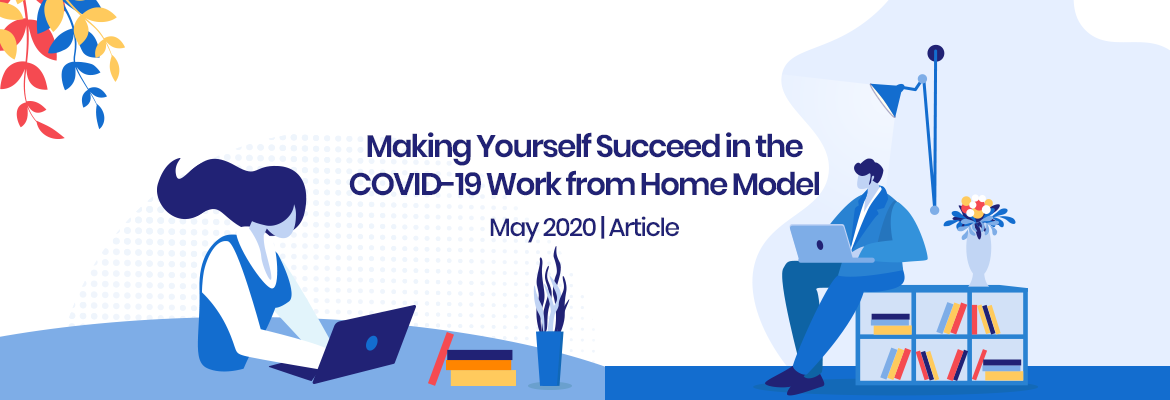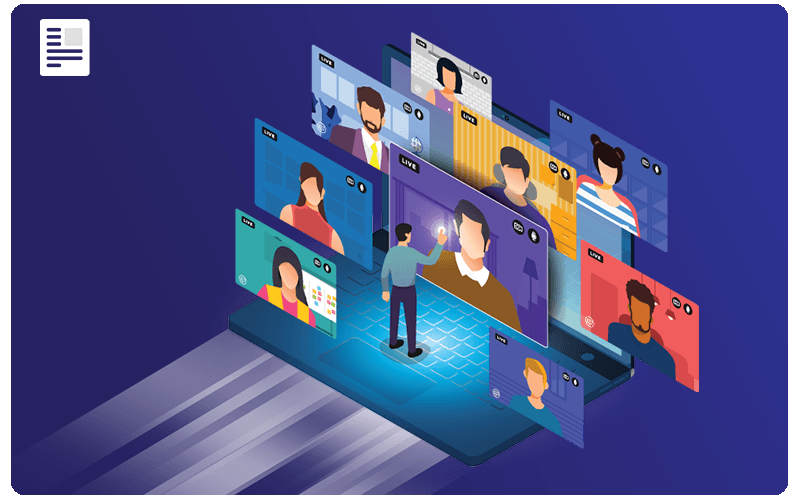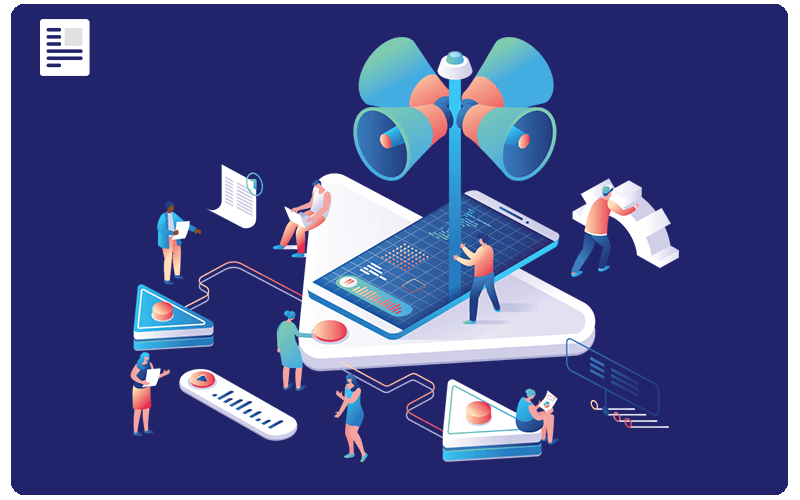

The unceremonious arrival of the coronavirus (COVID-19) pandemic has meant the start of the ‘20s could have hardly been more ominous for life and businesses alike. As one would expect, the transition has been far from straightforward. With no notice, formal training, or informal know-how on ways to overcome this beast, workers in every industry that typically averted changes (fundamental or otherwise) find themselves having to learn to swim in unchartered waters to survive and succeed. It will be interesting to see which ones come out stronger at the end of this and which one’s cave to the operational/change management challenges that could significantly impact the bottom lines of their organizations (and industry). After all, the learning curve of this new phenomenon, low reliability, and retention, loss of productivity due to unfamiliar working conditions, difficulty to manage and maintain accountability, lack of a community feel when working in isolation, barriers of effective and clear communication and others are major challenges that will have to be overcome to succeed in this. The key then is for all parties to collectively come together in making this as seamless a transition as possible so goals can be achieved while working from the (dis)comfort of homes.
Historical perspective of working from home
Home based jobs have been around for centuries. The early agriculture focused humans lived where they cultivated crops (and sold them too) and the hunter-gatherers made the fireside their ‘home’ while operating on the principal of combining work, living space, and resources for the betterment of their clans. The Industrial Revolution also impacted this phenomenon as it allowed craftspeople and merchants to take advantage of their home/workplace hybrid with its street-facing shops in the front and personal living space in the back (or above) for family (still observed to this day). World War II drew women in the western world to non-traditional workspaces (cottage industries) where they lived and worked, and many governments have been running flex from home working programs for a good 5 decades to aid workers with needs. So, work from home is not new and is continuing to become (somewhat) efficient and mainstream. An IWG research study revealed that 70% of global workers operated remotely at least once a week in 2019 and developed markets (like the US) saw remote worker growth of 90% over the last decade. Quite encouraging…
So how does one succeed in this work from home model?
As everyone around the world has witnessed (and still witnessing), with little notice, formal training, and informal know-how, workers from every industry that typically averted changes (fundamental or otherwise) find themselves having to learn to swim in unchartered waters to survive and succeed. The learning curve and productivity loss in remote work, low reliability of customer service and retention, difficulty managing and maintaining employee accountability, lack of community feel in isolation, and unclear communications are all major challenges to this success. Yet, the key is for all parties to collectively come together in making remote work as seamless a transition as possible to achieve organizational objectives, be it the organizations or their employees. This would mean that the employees would need to continue to keep their sleeves rolled up and take ownership of their own productivity, self-discipline and success in these challenging times. While there are many factors that contribute to success in this model, some of these suggestions and best practices can make the journey smoother.
- Embrace existing technologies provided to you: The good-old Microsoft Office Suite and G-Suite (if your organization subscribes to these) have combined in excess of 50 different applications that can be utilized for further productivity. Employees should explore the feature functions, watch tutorials on YouTube etc. to get better at the usage and find ways to continue to make themselves productive using these tools.
- Explore new tools and technologies: If these tools and technologies are not provided or the existing ones do not meet your needs, don’t be shy about exploring new ones and expanding your skillsets to enhance your careers. Time spent wisely these days can add dimensions to your careers or even put you on a path for new ones.
- Welcome new forms of communications and be cautious in their use: Understand the nuances and advantages of each communication medium and choose the right one based for your use case, depending on its effectiveness and accessibility. Also, exercise caution in the usage of these tools (especially the written ones) as often times the leadership can have access to these and read and comment. Best to use common sense in conducting as professional an attitude on these forums/tools as possible to avoid misunderstandings.
- Avoid feeling isolated and try to stay positive: As familiar as a home setting might sound, physical isolation caused by working from home (especially if you live by yourself) can be tough on productivity and health. While it may be easier said than done, find ways during and after work hours to stay engaged in activities that keep your mind off isolation. In off times, find a digital version of your favourite game/activity and see if it can be played with others using video chat or find other avenues of learning or partaking in hobbies etc. that can keep your mind off the feeling.
- Formulate a clear work from home schedule: Whatever a typical make-up of the day/week looks like for you, put it down on the calendar and follow it like you would if you were in the office. Keep co-worker, partner and customer meetings at the same frequency as before and if you blocked time to focus on specific tasks, work on projects, deliverables etc., do it. This will establish normalcy in your efforts and keep you productive and focussed.
- Mimic your typical workday routine (including the social part of working): You know yourself and your routine best. If your daily routine included a beginning of the day chat with a certain individual or a group of people in the coffee area, do that. Get some coffee and schedule a web call with those folks and catch-up on all the stuff you are used to before you begin work. I am sure they would appreciate this too. If your lunch routine included a 10-minute stretch or a walk, do the same at home and if your end of the day routine included another routine, try to mimic that digitally. While it may not be the same as face to face, but it will certainly keep your mind off any distractions and keep you motivated.
- Show up for work at home like you would normally do: While it’s easy to stay in the pajamas and fire up your laptop before you roll out of bed to get on your web calls and start working, its best to get ready for work. Take a shower, put on those office clothes (or at least nice and clean clothes) and sit in front of that machine like you would at the office and change back to normal home clothes once done with work. You will be surprised how this will do wonders for your productivity and demonstrate the kind of professionalism that will set you apart from the rest (you will thank us at bonus time for this one).
- Designate or create a home workspace: Even if you live by yourself, dedicate an area for yourself for work purposes and only work from there. This invisible divider of a working/living space can provide some psychological solace as once you leave that work area at the end of the working period, it will help get your mind off wok. If you live with family (especially if the family is large) and if your dwelling has limited space, dedicating space can be challenging. People have used their balconies, gardens, roof areas as spaces to work for this invisible divide and if none of this is available, well, figure out the timings of your work with the family and the best possible way for you to get space to work in the time you need to.
- Manage your time wisely and avoid burnout: Be more calculated with managing your time by using a time management software. As you spend more time working from home, you will begin to understand your own productive routines and you will get better at determining your productivity against deadlines and timelines going forward. It is very easy to get carried away sitting 8 hours a day or more in front of a machine and get screen fatigue. Do your best to avoid that. Also, schedule breaks in the middle of meetings: Remember those 10 minutes between classes in college that allowed a walk from one class to the other on campus. Well, try to do 25 and 50 minute meetings so you have those 5 or 10 minutes between meetings to regain your focus and give your mind and eyes a needed break. Also put in time blocks on your calendar as mandatory breaks for yourself.
- Ensure punctuality and account for time zone and scheduling differences: Punctuality can be a varied concept when it comes to different work cultures across the globe. In working from home environments, it is best to try and stick to meeting times and consider the various time zones when scheduling calls (especially with international clients and partners). In most cultures, especially Asian ones, people are a lot more lenient and laid back and meetings rarely begin and end on time whereas most westerners are very particular in their time habits. While it’s easier to cover up delays in face to face meetings, online ones are a different story. Stricter people in stricter work cultures rarely wait more than 5 to 7 minutes and end the web session if the other party does not show up. Find the right variants that work for the people you work with and follow the cultural nuances for success.
- Avoid overanalyzing social cues in online written communications: Since face to face meetings do not happen in this model, the virtual world becomes a foundational element for overanalyzing communications (tones, the way a text/email is written etc.). To avoid such pitfalls, it is best to ensure that multiple forms of communication techniques are employed (text, audio, video) especially if one is dealing with client communications. Videos can be most effective as facial expressions, tones and other gestures are visible and audible and leave very little room for misinterpretations. Audio (voice notes and such) are still better in such circumstances over just text as if the tone and meaning of a text is not understood in the way it should it could lead to misunderstandings and misinterpretations. In such cases, get on a video call or just pick up the phone and call the person to get the clarification you need. Its way better than just texting.
- Control the controllable and don’t worry about distractions: While working from home, many unexpected circumstances would occur that will be beyond your control. Your Wi-Fi, your laptop, your headset WILL stop working at a random time when it shouldn’t. Your parents or spouse or siblings or kids or uncles or aunts or grandparents or domestic staff or neighbours or friends or others WILL pop in at some point, say the worst thing at the worst time while you are not on mute (checkout the viral video of a man being interviewed by BBC and his two kids barging in). Live with it, don’t over think it, it happens to everyone (trust us, it does). Instead, focus on things you can control (work productivity, self-motivation, work goals) and be open about hurdles that are expected to disrupt your operations and productivity. Learn to use the Mute and Screen Off buttons wisely. They can be your best friend.
- Have fun with this new model: For those experiencing this model for the first time, please know that in the future, this will be a major way you will work. So, consider this the foundational training for your working years ahead of you. No need to panic. Learn your own individual styles, establish a model that works for you, align yourself with your favorite hardware, software and productivity components of working from home and begin excelling in them. These skills will take you places.
Achieve mastery in the work from home model; the TransformX way
As is the TransformX way, we assist clients to achieve success in their long-term work from home and digital operations by combining two signature offerings – Organizational Transformation and Employee Enablement and run Digital Maturity Assessments and Digital Acumen Assessments on their employees and the organization. These assessments provide a baseline of existing technological acumen, identifying shortcomings at a strategy, process, technology, or a skillset level across the board to succeed in this new model. The gathered insights are then used to create bespoke Digital Transformation Roadmaps and Learning Journeys to set our clients on a path of growth, profitability, and the exploration of new digital/data-enabled business models and revenue streams. With the Covid-19 pandemic on track to changing the way businesses operate fundamentally, such initiatives have become a necessity for the survival of the business against these turbulent conditions and any future business disruptions that follow. We look forward to engaging with you and your teams and making this a success. Stay safe and healthy!!!
The unceremonious arrival of the coronavirus (COVID-19) pandemic has meant the start of the ‘20s could have hardly been more ominous for life and businesses alike. As one would expect, the transition has been far from straightforward. With no notice, formal training, or informal know-how on ways to overcome this beast, workers in every industry that typically averted changes (fundamental or otherwise) find themselves having to learn to swim in unchartered waters to survive and succeed. It will be interesting to see which ones come out stronger at the end of this and which one’s cave to the operational, change management challenges that could significantly impact the bottom lines of their organizations (and industry). After all, the learning curve of this new phenomenon, low reliability, and retention, loss of productivity due to unfamiliar working conditions, difficulty to manage and maintain accountability, lack of a community feel when working in isolation, barriers of effective and clear communication and others are major challenges that will have to be overcome to succeed in this. The key then is for all parties to collectively come together in making this as seamless a transition as possible so goals can be achieved while working from the (dis)comfort of homes.
Historical perspective of working from home
Home based jobs have been around for centuries. The early agriculture focused humans lived where they cultivated crops (and sold them too) and the hunter-gatherers made the fireside their ‘home’ while operating on the principal of combining work, living space, and resources for the betterment of their clans. The Industrial Revolution also impacted this phenomenon as it allowed craftspeople and merchants to take advantage of their home/workplace hybrid with its street-facing shops in the front and personal living space in the back (or above) for family (still observed to this day). World War II drew women in the western world to non-traditional workspaces (cottage industries) where they lived and worked, and many governments have been running flex from home working programs for a good 5 decades to aid workers with needs. So, work from home is not new and is continuing to become (somewhat) efficient and mainstream. An IWG research study revealed that 70% of global workers operated remotely at least once a week in 2019 and developed markets (like the US) saw remote worker growth of 90% over the last decade. Quite encouraging…
So how does one succeed in this work from home model?
As everyone around the world has witnessed (and still witnessing), with little notice, formal training, and informal know-how, workers from every industry that typically averted changes (fundamental or otherwise) find themselves having to learn to swim in unchartered waters to survive and succeed. The learning curve and productivity loss in remote work, low reliability of customer service and retention, difficulty managing and maintaining employee accountability, lack of community feel in isolation, and unclear communications are all major challenges to this success. Yet, the key is for all parties to collectively come together in making remote work as seamless a transition as possible to achieve organizational objectives, be it the organizations or their employees. This would mean that the employees would need to continue to keep their sleeves rolled up and take ownership of their own productivity, self-discipline and success in these challenging times. While there are many factors that contribute to success in this model, some of these suggestions and best practices can make the journey smoother.
- Embrace existing technologies provided to you: The good-old Microsoft Office Suite and G-Suite (if your organization subscribes to these) have combined in excess of 50 different applications that can be utilized for further productivity. Employees should explore the feature functions, watch tutorials on YouTube etc. to get better at the usage and find ways to continue to make themselves productive using these tools.
- Explore new tools and technologies: If these tools and technologies are not provided or the existing ones do not meet your needs, don’t be shy about exploring new ones and expanding your skillsets to enhance your careers. Time spent wisely these days can add dimensions to your careers or even put you on a path for new ones.
- Welcome new forms of communications and be cautious in their use: Understand the nuances and advantages of each communication medium and choose the right one based for your use case, depending on its effectiveness and accessibility. Also, exercise caution in the usage of these tools (especially the written ones) as often times the leadership can have access to these and read and comment. Best to use common sense in conducting as professional an attitude on these forums, tools as possible to avoid misunderstandings.
- Avoid feeling isolated and try to stay positive: As familiar as a home setting might sound, physical isolation caused by working from home (especially if you live by yourself) can be tough on productivity and health. While it may be easier said than done, find ways during and after work hours to stay engaged in activities that keep your mind off isolation. In off times, find a digital version of your favourite game, activity and see if it can be played with others using video chat or find other avenues of learning or partaking in hobbies etc. that can keep your mind off the feeling.
- Formulate a clear work from home schedule: Whatever a typical make-up of the day/week looks like for you, put it down on the calendar and follow it like you would if you were in the office. Keep co-worker, partner and customer meetings at the same frequency as before and if you blocked time to focus on specific tasks, work on projects, deliverables etc., do it. This will establish normalcy in your efforts and keep you productive and focussed.
- Mimic your typical workday routine (including the social part of working): You know yourself and your routine best. If your daily routine included a beginning of the day chat with a certain individual or a group of people in the coffee area, do that. Get some coffee and schedule a web call with those folks and catch-up on all the stuff you are used to before you begin work. I am sure they would appreciate this too. If your lunch routine included a 10-minute stretch or a walk, do the same at home and if your end of the day routine included another routine, try to mimic that digitally. While it may not be the same as face to face, but it will certainly keep your mind off any distractions and keep you motivated.
- Show up for work at home like you would normally do: While it’s easy to stay in the pajamas and fire up your laptop before you roll out of bed to get on your web calls and start working, its best to get ready for work. Take a shower, put on those office clothes (or at least nice and clean clothes) and sit in front of that machine like you would at the office and change back to normal home clothes once done with work. You will be surprised how this will do wonders for your productivity and demonstrate the kind of professionalism that will set you apart from the rest (you will thank us at bonus time for this one).
- Designate or create a home workspace: Even if you live by yourself, dedicate an area for yourself for work purposes and only work from there. This invisible divider of a working, living space can provide some psychological solace as once you leave that work area at the end of the working period, it will help get your mind off wok. If you live with family (especially if the family is large) and if your dwelling has limited space, dedicating space can be challenging. People have used their balconies, gardens, roof areas as spaces to work for this invisible divide and if none of this is available, well, figure out the timings of your work with the family and the best possible way for you to get space to work in the time you need to.
- Manage your time wisely and avoid burnout: Be more calculated with managing your time by using a time management software. As you spend more time working from home, you will begin to understand your own productive routines and you will get better at determining your productivity against deadlines and timelines going forward. It is very easy to get carried away sitting 8 hours a day or more in front of a machine and get screen fatigue. Do your best to avoid that. Also, schedule breaks in the middle of meetings: Remember those 10 minutes between classes in college that allowed a walk from one class to the other on campus. Well, try to do 25 and 50 minute meetings so you have those 5 or 10 minutes between meetings to regain your focus and give your mind and eyes a needed break. Also put in time blocks on your calendar as mandatory breaks for yourself.
- Ensure punctuality and account for time zone and scheduling differences: Punctuality can be a varied concept when it comes to different work cultures across the globe. In working from home environments, it is best to try and stick to meeting times and consider the various time zones when scheduling calls (especially with international clients and partners). In most cultures, especially Asian ones, people are a lot more lenient and laid back and meetings rarely begin and end on time whereas most westerners are very particular in their time habits. While it’s easier to cover up delays in face to face meetings, online ones are a different story. Stricter people in stricter work cultures rarely wait more than 5 to 7 minutes and end the web session if the other party does not show up. Find the right variants that work for the people you work with and follow the cultural nuances for success.
- Avoid overanalyzing social cues in online written communications: Since face to face meetings do not happen in this model, the virtual world becomes a foundational element for overanalyzing communications (tones, the way a text, email is written etc.). To avoid such pitfalls, it is best to ensure that multiple forms of communication techniques are employed (text, audio, video) especially if one is dealing with client communications. Videos can be most effective as facial expressions, tones and other gestures are visible and audible and leave very little room for misinterpretations. Audio (voice notes and such) are still better in such circumstances over just text as if the tone and meaning of a text is not understood in the way it should it could lead to misunderstandings and misinterpretations. In such cases, get on a video call or just pick up the phone and call the person to get the clarification you need. Its way better than just texting.
- Control the controllable and don’t worry about distractions: While working from home, many unexpected circumstances would occur that will be beyond your control. Your Wi-Fi, your laptop, your headset WILL stop working at a random time when it shouldn’t. Your parents or spouse or siblings or kids or uncles or aunts or grandparents or domestic staff or neighbours or friends or others WILL pop in at some point, say the worst thing at the worst time while you are not on mute (checkout the viral video of a man being interviewed by BBC and his two kids barging in). Live with it, don’t over think it, it happens to everyone (trust us, it does). Instead, focus on things you can control (work productivity, self-motivation, work goals) and be open about hurdles that are expected to disrupt your operations and productivity. Learn to use the Mute and Screen Off buttons wisely. They can be your best friend.
- Have fun with this new model: For those experiencing this model for the first time, please know that in the future, this will be a major way you will work. So, consider this the foundational training for your working years ahead of you. No need to panic. Learn your own individual styles, establish a model that works for you, align yourself with your favorite hardware, software and productivity components of working from home and begin excelling in them. These skills will take you places.
Achieve mastery in the work from home model; the TransformX way
As is the TransformX way, we assist clients to achieve success in their long-term work from home and digital operations by combining two signature offerings – Organizational Transformation and Employee Enablement and run Digital Maturity Assessments and Digital Acumen Assessments on their employees and the organization. These assessments provide a baseline of existing technological acumen, identifying shortcomings at a strategy, process, technology, or a skillset level across the board to succeed in this new model. The gathered insights are then used to create bespoke Digital Transformation Roadmaps and Learning Journeys to set our clients on a path of growth, profitability, and the exploration of new digital, data-enabled business models and revenue streams. With the Covid-19 pandemic on track to changing the way businesses operate fundamentally, such initiatives have become a necessity for the survival of the business against these turbulent conditions and any future business disruptions that follow. We look forward to engaging with you and your teams and making this a success. Stay safe and healthy!!!




